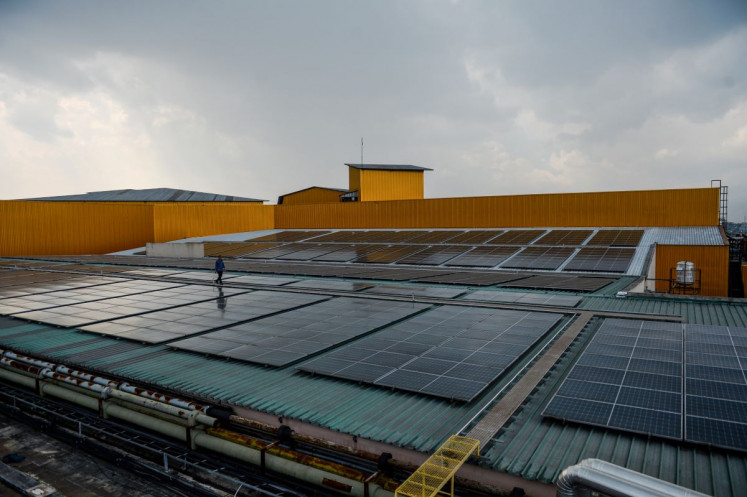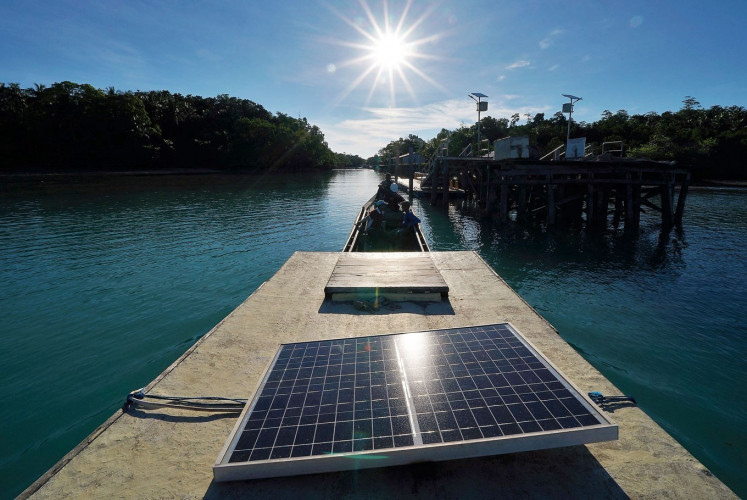Popular Reads
Top Results
Can't find what you're looking for?
View all search resultsPopular Reads
Top Results
Can't find what you're looking for?
View all search resultsSri Lanka train guard mourns tsunami dead 10 years on
Tsunami train: In this photograph taken on Dec
Change text size
Gift Premium Articles
to Anyone
 Tsunami train: In this photograph taken on Dec. 15, 2014, Sri Lankan railway guard Wanigaratne Karunatilleke looks on before his train departs for Matara from the Colombo railway station in Colombo. Wanigaratne Karunatilleke knew nothing about tsunamis before a wave of water slammed into his train on the Sri Lankan coast a decade ago, killing more than a thousand people. (AFP/Ishara S. Kodikara) (AFP/Ishara S. Kodikara)
Tsunami train: In this photograph taken on Dec. 15, 2014, Sri Lankan railway guard Wanigaratne Karunatilleke looks on before his train departs for Matara from the Colombo railway station in Colombo. Wanigaratne Karunatilleke knew nothing about tsunamis before a wave of water slammed into his train on the Sri Lankan coast a decade ago, killing more than a thousand people. (AFP/Ishara S. Kodikara) (AFP/Ishara S. Kodikara)
T
span class="caption">Tsunami train: In this photograph taken on Dec. 15, 2014, Sri Lankan railway guard Wanigaratne Karunatilleke looks on before his train departs for Matara from the Colombo railway station in Colombo. Wanigaratne Karunatilleke knew nothing about tsunamis before a wave of water slammed into his train on the Sri Lankan coast a decade ago, killing more than a thousand people. (AFP/Ishara S. Kodikara)
Wanigaratne Karunatilleke knew nothing about tsunamis before a wave of water slammed into his train on the Sri Lankan coast a decade ago, killing more than a thousand people.
With a little more knowledge, the 58-year-old train guard now believes he could have helped the victims of Sri Lanka's worst tragedy escape to safety.
Karunatilleke was among the few survivors of the disaster on the Ocean Queen Express, which has become a symbol of the disaster in Sri Lanka, and will be at the center of commemorations for the country's 31,000 victims on Friday.
Shortly before the tsunami hit, he says, the train was brought to an abrupt halt by a wave just after Kahawa station, 90 kilometers south of the capital Colombo.
He believes the 15-minute lull that followed could have allowed passengers to escape to high ground, and blames the huge loss of life on a lack of knowledge about tsunamis.
"If I had known about tsunamis," Karunatilleke told AFP in an interview.
"We had about 15 minutes to move the passengers to safety. I could have done it. We had the time, but not the knowledge."
Karunatilleke, who as head guard was responsible for passengers' safety, overruled the signalling system after the first wave and ordered the driver to move, but by then it was too late.
When the tsunami hit, he became trapped inside a compartment that was floating in the water, managing to escape through a window.
The train was rebuilt after the tsunami and since then Karunatilleke, who is still head guard, stops at the exact same spot every year on Dec. 26 to pay his respects to his departed passengers.
This year will be particularly significant, with the Colombo to Matara train making a special journey for passengers to attend Buddhist, Hindu, Christian and Muslim ceremonies planned to mark the 10th anniversary of the disaster.
The tsunami wave first hit Sri Lanka's southeastern coast, travelling across the island at an average speed of about 500 kilometers an hour and killing 31,000 people in a single hour.
Sri Lanka had not been hit by a tsunami in living memory before 2004 and the tragedy became the country's worst natural disaster.
The memories still haunt Karunatilleke, who recalls rescuing a small girl and boy from the floodwaters and placing them inside a train compartment only to see it smashed minutes later.
"I will remember those two children for the rest of my life" he said.
"I did not know about tsunamis then and neither did anyone else on board.
"I wish I had known.... I really feel bad that I was not able to save those lives." (*****)









